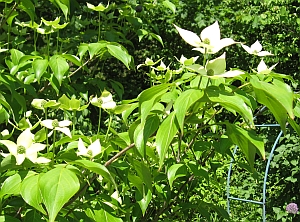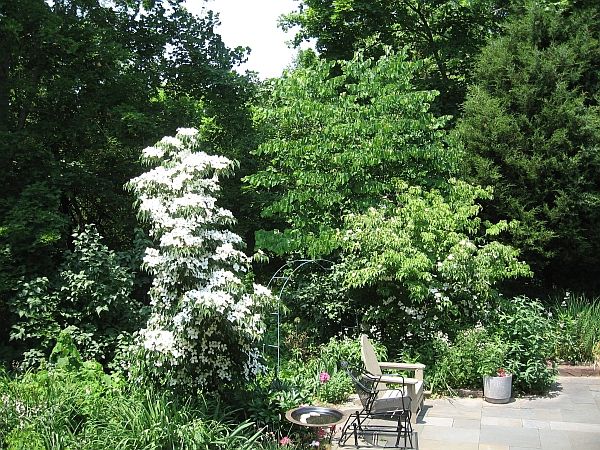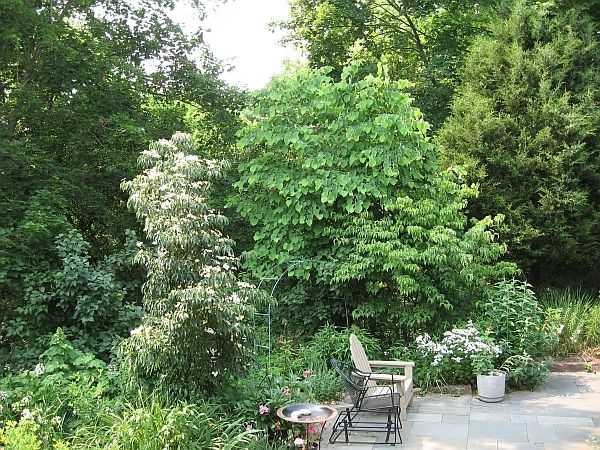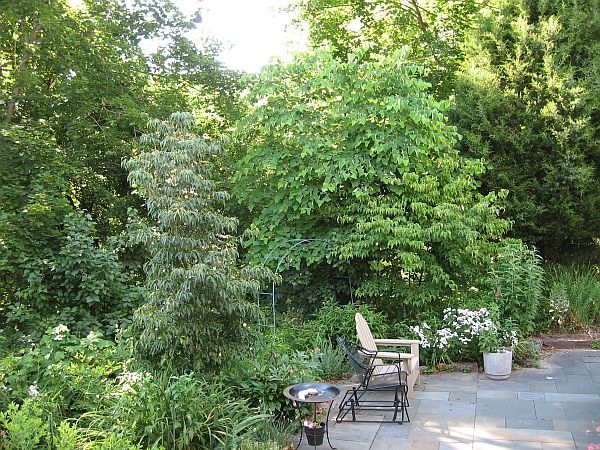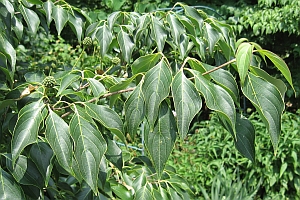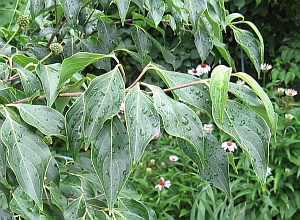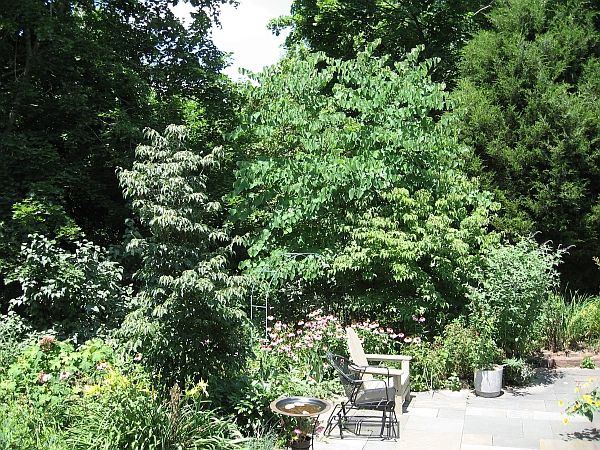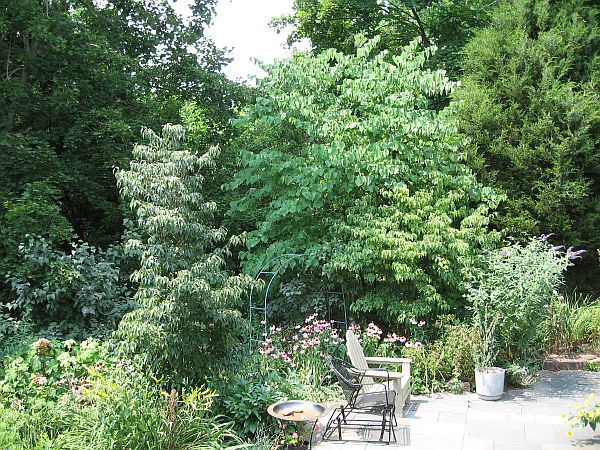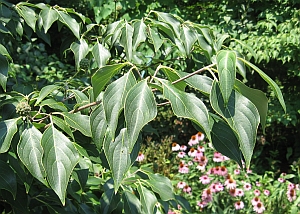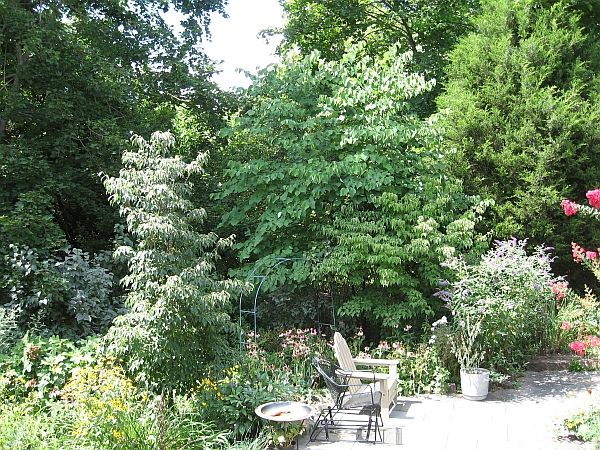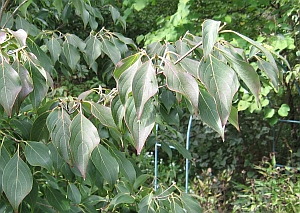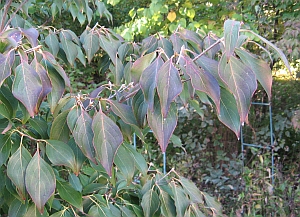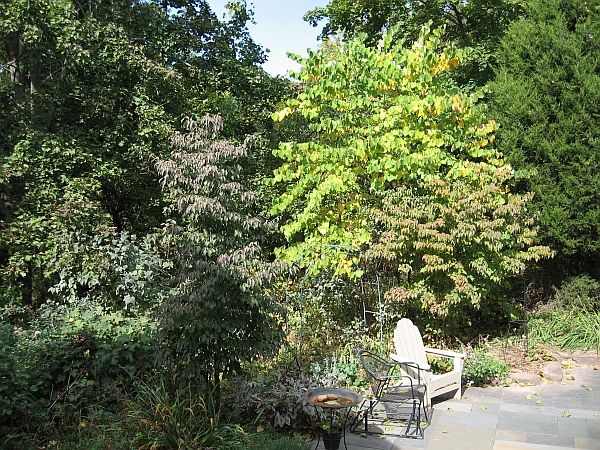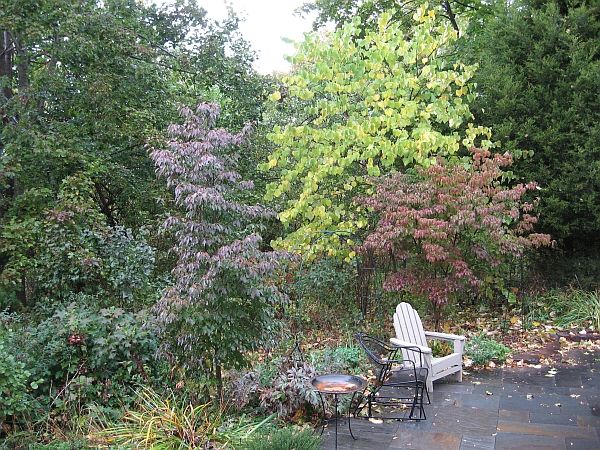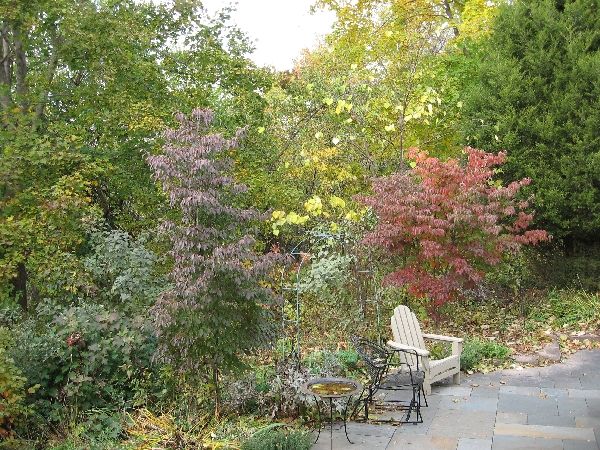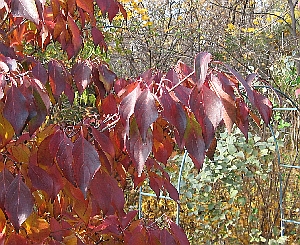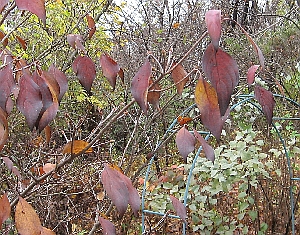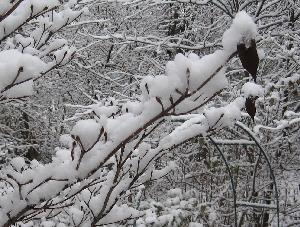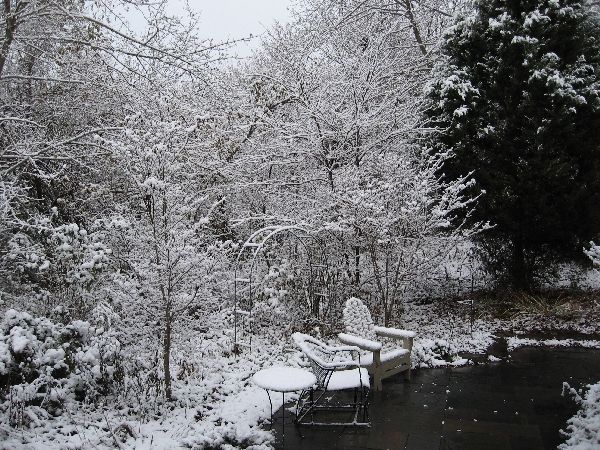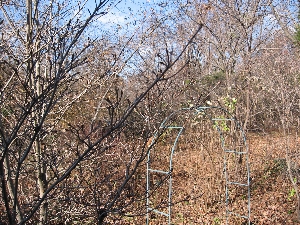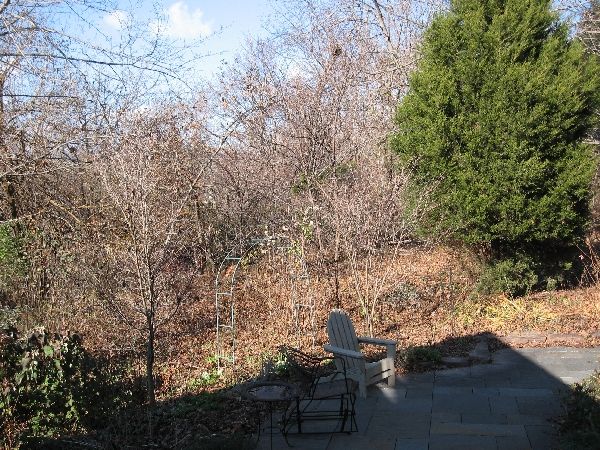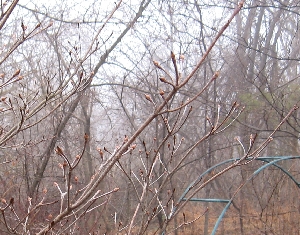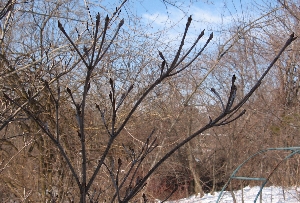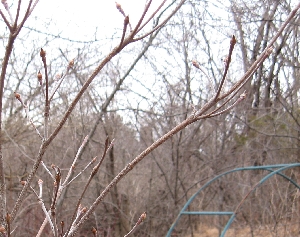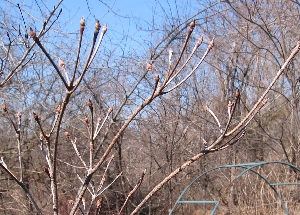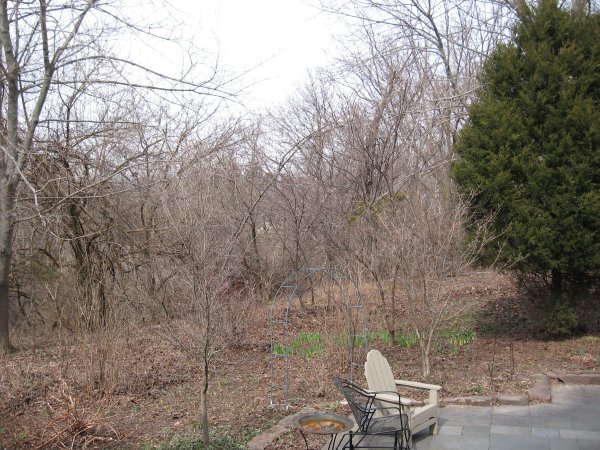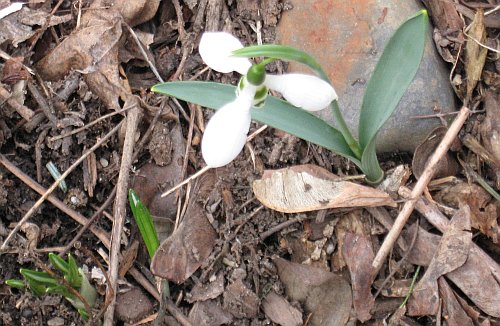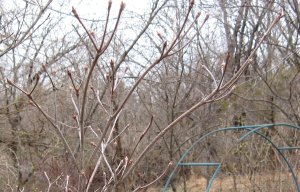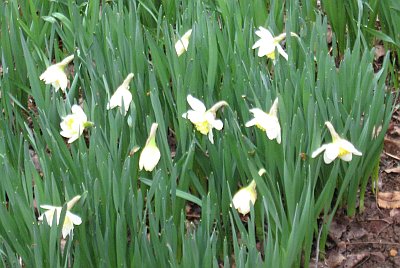Text and images Copyright 2008, David R. Brooks, Institute for Earth Science Research and Education
Notes from a Temperate Climate
David Brooks
This page is dedicated to students, teachers, and all my friends in Thailand. Although I know that students living in Thailand's tropical climate study other climates in school,
most of them have not yet had the experience of visiting or living in a place with a completely different climate.
Over the next months, I will post photos taken from the front
steps of my house and other places around our house. After a year, I hope you will have a better idea of what it is like to
live in a temperate climate. If you have questions, you are welcome to send me an e-mail. For complete weather summaries, see
this site, which is at a small commercial airport about 10 km from my house.
30 March 2008
These notes start on 30 March 2008, just as spring is beginning where I live in Pennsylvania, We have weather that is typical of much of the northeastern and midwestern United States.
Our house is near the east coast of the United States, about 150 km from the Atlantic Ocean, at 40.2°N latitude
and 75.3° west longitude, at an elevation of 120 m. March marks the change from winter to spring weather in our climate. Because of the big change in weather, March is sometimes
described as "In like a lion, out like a lamb."
The air temperature at 15:30UT (11:30am, Eastern Daylight Time) was 7°C. Temperatures may still drop to freezing at night, but the date of "last frost" is rapidly approaching. During
March, the maximum temperature was 18°C and the minimum was -4°C. My wife,
Susan, has already planted some cold-tolerant vegetables, such as peas, in her vegetable garden. She is starting other plants, such as tomatoes, indoors, but it is still too cold
to plant them in the garden.
In temperate climates, there is a mix of evergreen and deciduous trees. Typically, deciduous trees lose
all their leaves during the winter. Ground vegetation also dies, leaving only brown remains and last fall's leaves.
In Figure 1, taken on 30 March 2008 at about 15:30UT, you can see many deciduous trees on our property. They may look dead,
but they are not. On the right
is an eastern red cedar, which stays green year-round. On the ground, there are only some clumps of green vegetation visible -- just a few weeks ago nothing green was visible.
These are daffodils, very popular bulb-propagated plants
which are among the first flowers to bloom in the spring -- a close-up is shown in in Figure 2. These flowers are about 6 cm in size. Some crocus,
which are also bulb-propated plants, are shown in Figure 3, growing beside our patio. They start blooming a few weeks before daffodils and their flowers are about 3 cm in size. The bulbs of
these plants lie dormant underground all winter. So, their emergence in the spring is triggered not by air temperatures or sunlight, but by warming soil temperatures.
Unlike most vegetation, daffodils are not appealing
food for the whitetail deer that are common in our area, so they remain unharmed.
Figure 4 shows buds just forming on a Kousa dogwood, an ornamental
deciduous tree native to Japan. Elsewhere on our property, forsythia, shown in Figure 5, are also
flowering. These bushes are often planted in hedges along property lines. People like them because their small bright yellow flowers are a sure sign of
spring. Later in the year, the bush is not nearly so attractive.
|
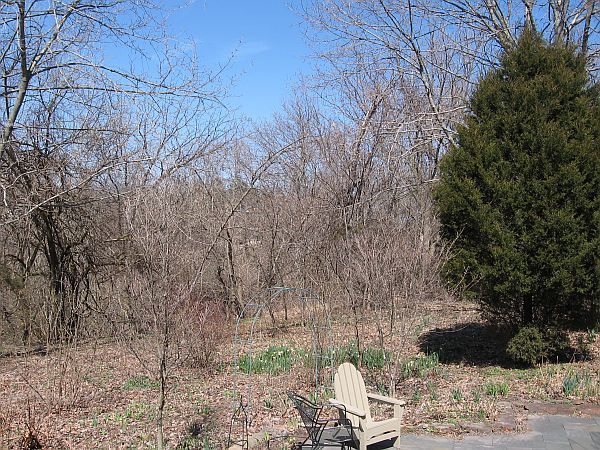 |
| Figure 1. 30 March 2008. |
 |  |  |  |
| Figure 2. daffodils. | Figure 3. Crocus. | Figure 4. Buds on Kousa dogwood. | Figure 5. Forsythia. |
05 April 2008There is a rhyme about April: "April showers bring May flowers." But, April is not a particularly rainy month where I live. Figure 6 shows the monthly average
precipication in our area -- we receive a little more than 100 cm of precipitation per year. Unlike the climate in southeast Asia, precipitation in temperate
climates is more uniformly distributed over the year. The average number of days per month with precipitation is also shown in Figure 6.
The rainiest month where I live is July, often with thunderstorms and heavy rain. February is the driest month, with precipitation typically in the form of snow,
and April is about average.
When precipitation falls in the form of snow, the number of centimeters is calculated as the rainfall equivalent of the melted snow.
On average, there are no "dry" or "wet" seasons as
there are in southeast Asia. |
 |
| Figure 6. Average precipitation where I live, by month. |
|
| On this overcast day, the view from my front steps has changed only a little. Overall, in Figure 7, there is a slightly more greenish appearance as tree leaves start to appear.
Figure 8 shows a close-up of some of these trees, with their small leaves. Figure 9 shows a larger area
planted with daffodils, which are now at their prime. Figure 10 shows a view of the meadow behind our house. This photo helps to explain why agricultural burning is rarely used in
my climate -- all the meadow grasses die during the winter. The new growth will start in a few weeks.
|  |
| Figure 7. 05 April, 2008. |
 |  |  |
| Figure 8. Leaves just starting to appear. | Figure 9. Daffodils in full bloom. | Figure 10. Meadow in early spring. |
One of the differences between Thailand and where I live, much farther north, is the seasonal dependence of day length. Figure 11 shows the number of hours of daylight
where I live
at 40°N and around Bangkok, at about 13°N. At my latitude, the day length varies from a little more than 9 hours in the winter to a little less than 15 hours in the summer. In Thailand,
there is always at least 11 hours of daylight, but never as much as 13 hours. At the Vernal and Autumnal equinoxes (the start of Spring and Fall in the northern hemisphere), there is
12 hours of daylight regardless of where you live. Another difference between Thailand and where I live is the position of the sun in the sky at noon. My latitude is
well above the Tropic of Cancer and Thailand is well below. (The Tropic of Cancer is an imaginary line drawn around the Earth at a latitude of about 23.5°N.)
The solar zenith angle is defined
as the angle between an imaginary line pointing straight up from an observer's location and an imaginary line to the sun, as shown in Figure 12.
At my latitude, the noon-time solar zenith
angle varies from about 63° in the winter to 17° in the summer. The sun is never directly overhead. In Thailand, the noon-time solar zenith angle is a maximum
of about 37° in the winter and reaches 0° twice during the year when the sun's declination (its angular position north or south of the equator) passes through Bangkok's
latitude. The strong seasonal variability in the day length (and the availability of sunlight) and the variation in maximum solar zenith angle are the most important
reasons why there are much greater temperature differences between winter and summer in temperate climates than in tropical climates.
 | 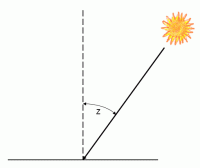 | 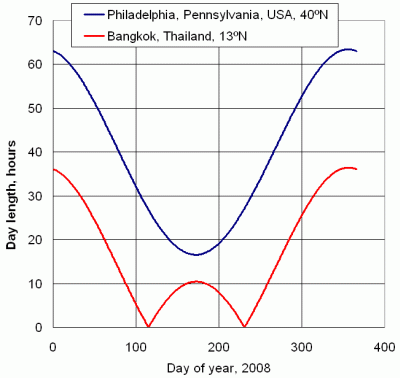 |
| Figure 11. Hours of daylight in Philadelphia and Bangkokg. | Figure 12. Solar zenith angle. |
Figure 13. Zenith angle at solar noon. |
12 April 2008
| Due to warmer weather and some rain, spring growth has accelerated. Figure 14 shows much more green on leaves and in ground vegetation.
The Kousa dogwood buds are greener and starting to open, as shown in Figure 15. The Kousa dogwood is a late-flowering tree compared to many others in our area.
Figure 16 shows new blossoms on a wild cherry on our property. Many trees have new leaves that were completely absent
only two weeks ago, as shown in Figure 17. |
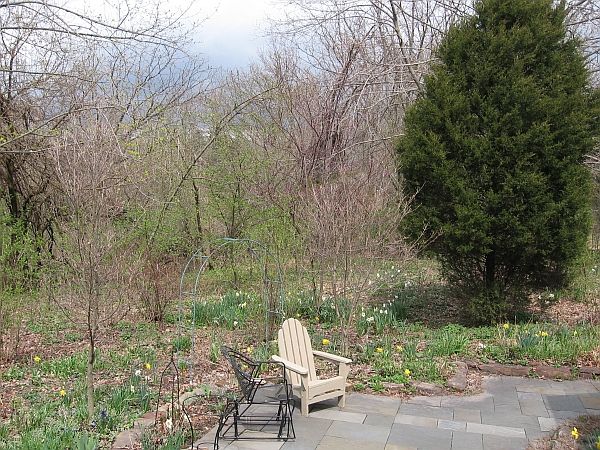 |
Figure 14. 12 April 2008 |
 |  |  |
| Figure 15. Kousa buds, 12 April 2008. | Figure 16. Flowering Cherry, 12 April 2008. | Figure 17. New leaves, 12 April 2008. |
19 April 2008
| What a difference one week makes! In spring, changes happen quickly when temperatures get warmer and days get longer. In this photo, a wild cherry tree
has blossomed with white flowers and a redbud tree has also blossomed. The Kousa dogwood buds are much greener, but are just beginning to open. |
 |
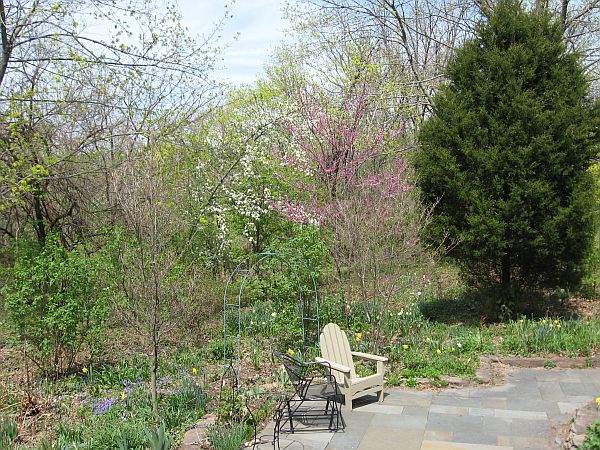 |
26 April 2008
| An overcast day in late April. There has been much less than the average precipitation so far this month. The leaves on the Kousa dogwood are now open and the
flower buds on the Kousa dogwood are clearly visible now, as shown in the middle photo. |
 |
 |  |
03 May 2008
| Another overcast day in early May. |
 |  |
10 May 2008
| A bright but still overcast day in May. |
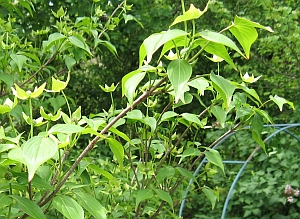 |  |
| Spring officially started yesterday, on the 20th. This is a beautiful day, with a high temperature
around 10°, although nighttime temperatures can still fall below freezing. At this time of year, gardeners have already started
their season's vegetable planting indoors. They want to get the new seedlings out into their gardens as soon as possible, to get an early start on the
growing season, but they need to be careful with temperature-sensitive plants such as tomatoes, which will not survive even a brief freeze. |
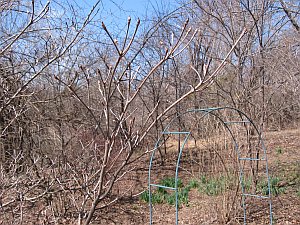 |  |
| Crocus have sprung up in just the last few days, another sure sign that spring is here.
| 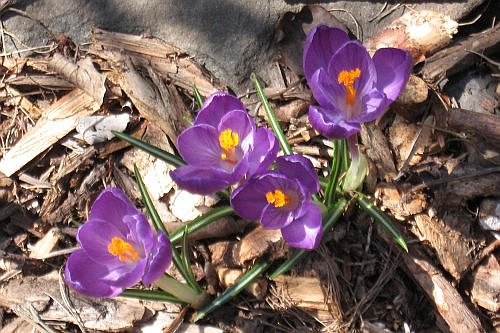 |
| Robins migrate south in the winter and their return is another sign of spring where we live. This female is looking
and listening for
worms and grubs in our yard. (The female's coloring is basically the same as the male's, but it is not as bright.) There are flocks of 10-20 robins around our
house, looking a little thin from their journey. They will fatten up considerably during the next few weeks as they mate and
start building nests. |
 |


























